Plan the perfect children's rooms with these expert tips
Dreaming of creating clever, kid-approved spaces that will last, both in terms of style and function? We asked the experts to share their tips


Come with us (if you dare to enter) into the world of children’s bedroom design, where smart furniture choices, savvy storage solutions, and the chance to reflect your offspring’s personality form the basis of a room that will last.
But how and where do you start with this balancing act? We asked three children’s room experts – a product designer and two interior designers – just what makes a children's room idea for a school-age-through-to-tween child a success.
How to plan children's rooms
1. Create a space they can call their own

‘The sign of a truly excellent kid’s bedroom is one where the child feels that it’s their own personal space’, says D’arby Mawson Assistant Designer, Habitat Kids. ‘Functionality should be at its core, as the space needs to do lots of things, whether that’s work, rest or play.’
Fi Campos, Interior Designer for Little Folks Furniture agrees; ‘Depending on the child’s age, this may look like a room with a small area to play, a study station, a chill-out/reading nook and a comfy bed that’s warm and inviting.’
When designing for tweens, Medina King, Creative Director, MK Kids Interiors says don’t ignore the hormones; ‘At this age, children are experiencing a major transformation with puberty – suddenly it appears their tastes have matured. They need a room that suits their preferences and meets their needs for study, time alone and with friends.’
2. Get the kids involved from the get go
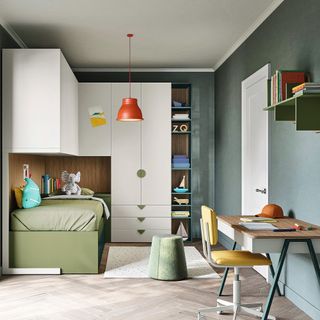
Fi says it’s important to involve the kids in the design; ‘Show them the beds you are considering online, pull together a moodboard on Pinterest and discuss things like paint colours and bedding so they feel included. You could let them draw their dream bedroom; the likelihood is that it won’t be achievable but there may be a few requests in there that you can turn into reality.’
D’arby says: ‘Let them pick a colour or theme and use their ideas for the start of your scheme – they are guaranteed to love it at the end.’
Get the Ideal Home Newsletter
Sign up to our newsletter for style and decor inspiration, house makeovers, project advice and more.
3. Think multifunctional
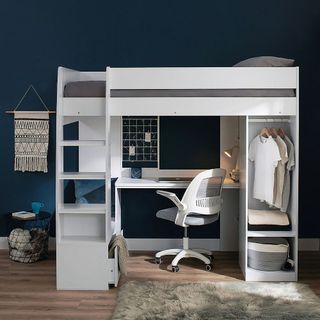
‘We expect children’s bedrooms to serve a multitude of purposes – and that’s a lot of j,obs for one room,’ says D’arby, ‘so when I’m designing, I’m always looking at pieces that are going to adapt.’ Medina adds, ‘Storage – and a lack of – is always a problem. We resolve this with multifunctional pieces.’ Fi says, ‘Try using the walls for shelving and totes, and make use of underneath the bed, too.’
For tricky spaces, Fi recommends a mid or high-sleeper bed as a smart small kids' bedroom idea, ‘with a desk, storage and bed built in. This way you can properly zone the room with a study station, storage place, chill-out zone and sleeping area. Some mid-sleepers have furniture options that can roll in and out from under the bed – useful as they can be moved around the room.’
‘It’s about taking a piece of furniture and stretching what it can do – like a cabin bed with a large cupboard and shelving underneath’, says D’arby.
4. Choose furniture wisely

Like with any room design, the furniture choices should cater to the room's specific needs. As D'arby explains, ‘Fitted furniture involves bespoke work and can be expensive, while freestanding can be bought from shops and easily moved when needed.’
‘High-quality beds and furniture, such as those made from hardwood, last much longer,’ says Fi, who also says to avoid anything too themed. ‘Timeless, beautiful, classic beds and furniture will look great no matter what the interior scheme.’
5. Try to incorporate neutral elements
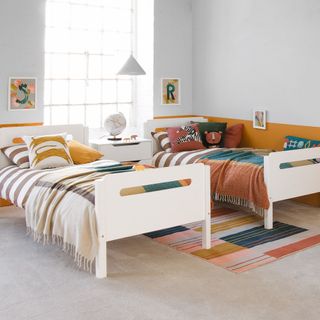
Neutral decor isn't something we typically associate with children's rooms, but this can be the best way to avoid having to change everything as your little ones grow up.
D’arby says to keep things simple to last; ‘Neutral tones and materials allow parents to feel confident about adapting them, even if the child’s tastes change as they get older. Children’s ranges don’t have to look childish – you can have stylish mixed with an element of fun, such as a neutral furniture base with handles children will love.’
‘A neutral palette, including warm white – or even black –will stand the test of time,’ agrees Fi. ‘If you prefer to avoid redecorating every few years, sticking to pastels and neutrals can help avoid this.'
6. Choose bold accent colours
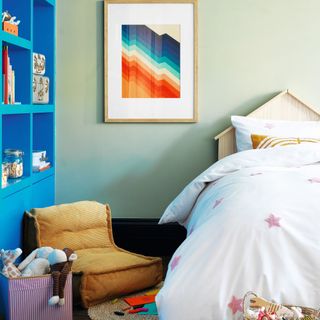
Inject personality into the room by building on the neutral base. Fi says, 'if your child likes bold colours, let them pull in a few of their favourites with brighter accessories to accent the space. These are easier – and cheaper – to switch up in years to come.’
Small changes to a neutral base are easy, says D’arby: ‘Try a different light shade or rug, while new bedding is a quick refresh offering a different look at an affordable cost,’ she adds.
7. Display key items
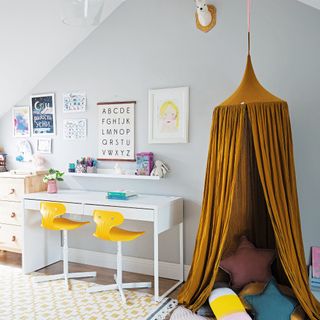
‘Totes and storage are great ways of hiding all the visual clutter, but if your child has some favourites that they like to have to had, it’s essential to make them feel part of the room too, so consider leaving them out on display’, says Fi, ‘a stylish shelf with a few of their most treasured trinkets is a good way of making them feel special in a room.’
‘Larger pieces of furniture and storage solutions should always be attached to the wall’, adds D’arby, ‘while smaller toy boxes and bedside tables can be freestanding and easily moved around. Being adaptable is really important at this age – furniture that moves or folds away can create room to do other things.’
8. Consider flooring
‘Carpets are usually a great choice for children’s bedrooms,’ says Fi, ‘helping with soundproofing and adding warmth. Otherwise, painted floorboards or click-together vinyl are great alternatives. If going for a hard floor, I’d always add as big a rug as you can get away with for play and popping little feet onto on those chilly winter mornings.’
9. Be savvy with the space
‘Kids’ rooms are often the smallest in the house, so use the walls for storage so you aren’t impacting on the footprint of the floor (that precious play space), with long rails or scaffolding plank-style shelves. And don’t forget the area under the bed too’, says Fi on the best kid's small bedroom storage ideas.
Jennifer Morgan is an award-winning editor, writer and stylist, with over 25 years’ experience writing, styling and editing home interest magazines. Jennifer was the deputy editor of Ideal Home from 2008-2010, before launching Ideal Home’s sister title, Style at Home in 2010. Jennifer went on to launch several craft magazines and websites, before going freelance in 2016, with a client list that includes John Lewis, Dunlem and Nordic House. Today, she writes for Ideal Home, Real Homes, Waitrose, Woman & Home, Sainsbury’s Magazine and Homes & Gardens. But it was during lockdown that Jennifer realised her dream of publishing her own magazine – Simply Scandi.
-
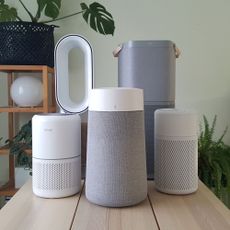 How we test air purifiers at Ideal Home
How we test air purifiers at Ideal HomeWe've put multiple air purifiers through Ideal Home's testing process to find the best-in-class. Here's how we do it.
By Amy Lockwood
-
 Planting ideas for window boxes – 10 ways to make the most of this tiny outdoor space
Planting ideas for window boxes – 10 ways to make the most of this tiny outdoor spaceFrom creating a herb garden to the best smelling blooms to plant, you'll be spoiled for choice
By Ellis Cochrane
-
 How to aerate your lawn to let nutrients, water and air reach it better – resulting in a healthy, strong and green grass
How to aerate your lawn to let nutrients, water and air reach it better – resulting in a healthy, strong and green grassThe step-by-step guide to aerating a lawn approved by gardening experts
By Sara Hesikova